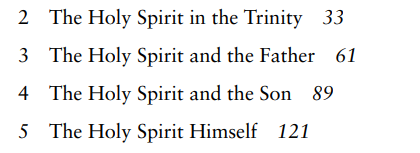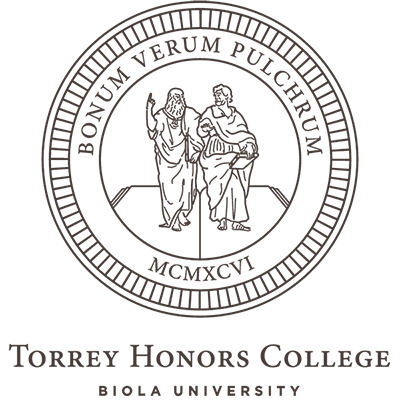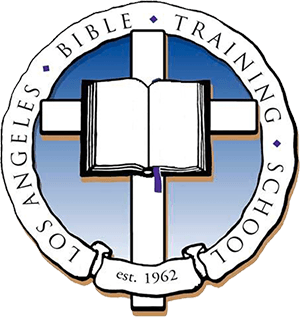A scene from The Canterbury Psalter (12th century)
Blog
The Doctrine of the Spirit in Classical Mode

With a little over a hundred and fifty pages to introduce the doctrine of the Holy Spirit at a non-technical level, I knew my main goal: I wanted to write the most utterly trinitarian book on the Spirit available for a wide audience. Of course I want everybody who reads the book to get exactly the specific doctrine promised in the title, but also to get a good helping of the comprehensive doctrinal framework around it. So I framed the doctrine of the Holy Spirit securely within the doctrine of the Trinity, even making that framing memorably conspicuous in the table of contents:

I think the book is about 20 pages longer than I had originally hoped. The series Short Studies in Systematic Theology has the word Short right there on the cover, so it needs to keep the promise. But those extra 20 pages are pretty obviously located in the sections where I take the time to supply some extra information about thinking trinitarianly about the doctrine of the Holy Spirit.
Doctrines that aren’t always emphasized in pneumatology, but get some attention in this conspicuously Trinitarian pneumatology:
- Inseparable operations of the persons. Even though the topic is the work of the Spirit, I consider it within the bounds of the broader principle that the persons of the Trinity don’t act separately, independently, or exclusively. Every work of God is a triune work, including the Spirit’s work.
- Processions and missions. There is an eternal relation of origin in the life of God, a procession of the Spirit from the Father through the Son. To that procession is added a temporal sending or mission, in which the Spirit’s unique identity is made known.
- Taxis (from-through-in). Every external work of the Trinity is from the Father, through the Son, in the Holy Spirit. This order in the external works reflects the order in the divine life, and manifests the positive sense in which the Holy Spirit is third: he is the finality or completion of the Trinity’s order.
- Appropriations. Some of the triune God’s actions, though inseparably worked by the three persons, are instructively similar to order of the persons among themselves. So creation is appropriated to the Father (but not exclusively as if the Father alone creates), and eschatology or completion is appropriated to the Holy Spirit as manifesting his thirdness.
Along the way, I think I also wrote the most classical book on the Holy Spirit for a general audience, not just in the sense that the above-mentioned elements of Trinitarian theology are part of a classical theist doctrine of the Trinity, but also in the sense that this is a doctrine of the Spirit that is intentionally aligned with the exalted doctrines of God’s immutability, impassibility, aseity, and simplicity. I think the aseity and simplicity aspects remain somewhat subtle, but immutability and impassibility are more pronounced.
- Aseity mostly shows up in the defense of the Spirit’s full deity, where I argue that he possesses the numerically singular divine essence and therefore possesses the essential aseity of God. He is hypostatically from the Father (a patre) but essentially not from anything (a se).
- Simplicity shows up in secret ways, even sneaky.
- Immutability matters in a doctrine of the Holy Spirit that relies on the Spirit’s progressive revelation. That progressive revelation must follow the historical structure of the biblical category of mystery: it was always true, long hidden more or less in the divine secrecy, and finally made known with the clarity that lets us retrospectively identify the unchanging person.
- Divine impassibility is an especially important doctrine to emphasize in pneumatology, because Scripture frequently aligns the Holy Spirit with struggle, groaning, and grieving. This Biblical theme has sometimes led readers to reject the divinity of the Spirit: if God does not struggle, groan, and grieve, but the Spirit does, it would follow that the Spirit is not God. Pneumatologies that treat the Spirit as the immanent sufferer who groans in our midst in his own nature with his own pain either have trouble keeping the Spirit on the divine side of the line, or revise their view that God is in fact impassible. Both errors miss the opportunity to glimpse the particular person and work of the Holy Spirit. (I discuss this under the doctrine of the Spirit’s “double depth,” which I’ll say more about in another post).
I hope that readers interested in the Holy Spirit will get what they want, and will also take on board an applied version of the classical doctrine of God. I also hope that teachers looking for introductory texts in pneumatology will see the advantage of approaching this doctrine from a resolutely Trinitarian and intentionally classical angle.
About This Blog

Fred Sanders is a theologian who tried to specialize in the doctrine of the Trinity, but found that everything in Christian life and thought is connected to the triune God.


